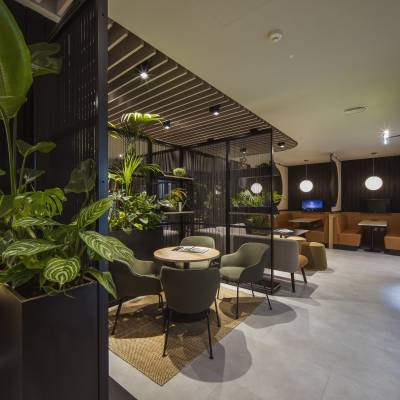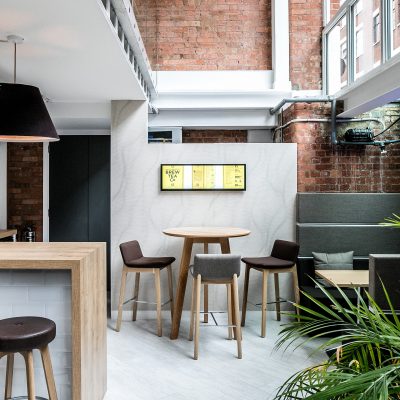Workplace lounges – They’re far greater than you think
 Where do you feel most comfortable? For a lot of people, the answer may be the humble lounge. That can denote one of several places; from a luxury hotel lounge to your very own cosy living room, but the wider definition of the word is simply somewhere to sit or recline and relax. Given the positive impact lounges can create it’s no surprise that workplace design has evolved to encapsulate these spaces, providing places to relax and unwind away from the pace and intensity of the office.
Where do you feel most comfortable? For a lot of people, the answer may be the humble lounge. That can denote one of several places; from a luxury hotel lounge to your very own cosy living room, but the wider definition of the word is simply somewhere to sit or recline and relax. Given the positive impact lounges can create it’s no surprise that workplace design has evolved to encapsulate these spaces, providing places to relax and unwind away from the pace and intensity of the office.
Whilst workplace design and application can and will be debated relentlessly, everything essentially feeds into the fundamentals of what people care about when it comes to their physical workplace. These can include but are by no means limited to areas for social cohesion, space to move away from the desk, and a place that aides individual wellbeing.
Over the past few years, we have seen the workplace take inspiration from outside influences, particularly in hospitality, giving designers greater scope to intertwine spaces and push creative boundaries. Wellness rooms, work cafes and workplace lounges have all risen in popularity in recent times, with the latter being present in almost all projects nowadays.
At the beginning, the specification of workplace lounges in the modern office was about giving employees somewhere to relax and unwind away from the desk, but the wider picture is more complex. Workplace lounge design has become increasingly focussed on physical and mental wellbeing, rather than being positioned purely as a relaxation area.
Whilst it may seem like a contradiction to mention lounge design and physical wellbeing in the same sentence, research does suggest that the workplace lounge can have an impact on physical health, as well as mental wellbeing.
In a paper published by Cornell University and Cerise Marcela, they note that “visibility (of communal areas) plays a primary role in determining sedentary behaviour. Individuals seated in areas with lower visibility to the community spaces were more likely to spend more hours sitting.”
Since most people spend a large proportion of their time in the workplace, it’s natural and sensible to take all possible opportunities to encourage habits that favourably affect mental and physical wellbeing. By placing workplace lounges in community hubs where employees remain visible, they are encouraged to move between zones, with research suggesting that this can reduce occupational sitting by up to 40 minutes each day.
From Stockholm to Shanghai, global publication Office Snapshots consistently tracks and publishes case studies for some of the world’s most aspirational offices. The vast majority of these spaces utilise the lounge in one way or another, ensuring they remain ubiquitous with workplace design in 2023 and beyond.
Paulo, our latest launch is a workplace lounge range conceptualised to meet the needs of users across workplace and hospitality. Comprising of tables, chairs and a sofa, the collection is the living embodiment of and the ideal solution for the workplace lounge.


